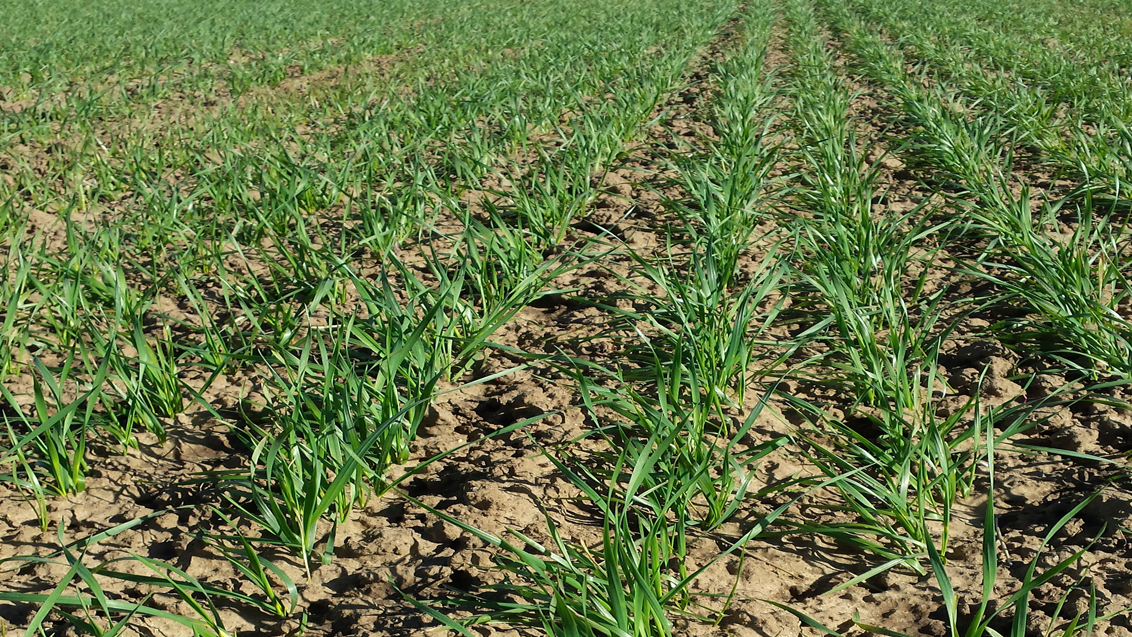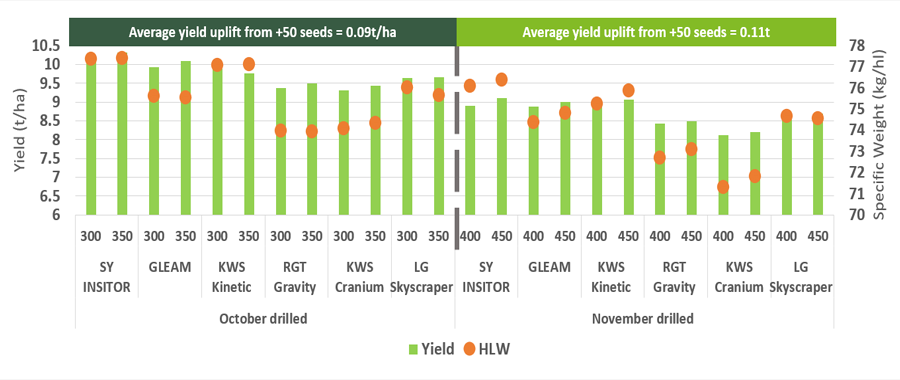High performance in the late drilled slot starts with variety selection

Delayed wheat drilling is commonly adopted as part of an integrated strategy against grass weeds, Barley yellow dwarf virus (BYDV) and to help minimise overwintering inoculum in crops to ultimately reduce disease risk.
Once again, reasonable conditions in September have meant that a good proportion of the autumn cereal drilling is underway and good progress has been made. However, the wetter start to October has stalled progress, and several growers which were not planning to start drilling wheat until at least October may now be seeing it planted later than initially planned.
Trials results
Previous Syngenta trials have shown the value of increasing seed rates when drilling is delayed to mitigate yield losses. A consistent trend in trials has shown that later sown winter wheat has had reduced establishment – as you would expect. Late drilled crops will be in the ground for less thermal time and will not be able to compensate for poor establishment as well as early sown crops.
Our trials in 2021 looked at several varieties drilled in the first half of October at a rate of 300 + 350 seeds/m2. The same varieties were then drilled in November at a rate of 400 + 450 seeds/m2. The trials gave some clear conclusions:
- Higher seed rates achieved higher plant stands
- Increasing seed rates resulted in more fertile ears/m2
- The higher seed rates delivered a yield benefit at both drill timings
- The later drilled timing had lower potential, but the impact should be balanced against the benefits of delayed drilling, such as reduced disease pressure
- Variety selection matters: GLEAM and SY INSITOR are both flexible choices that deliver high performance in both the October and November drilled slot.
- Specific weights were lower in the later drilled situation for all varieties – selecting a variety with inherently high specific weight like SY INSITOR helps
- mitigate that risk

Source: Syngenta trials
Syngenta Seeds Technical Expert, Matthew Bull said,
"Levels of establishment vary significantly based on many factors including soil type, cultivation and seedbed quality, pest pressure and arguably most importantly, weather conditions pre and post drilling. With so many factors affecting establishment, optimal seed rates are something that we cannot be prescriptive about. Local conditions must be considered, and planting rates adapted accordingly to reach target plant populations".
Top tips for delayed drilled crops:
- Select a proven variety suitable for delayed drilling: SY INSITOR and GLEAM are well suited for the later drilling slot. SY INSITOR has been proven to have a vigorous rooting system from early stages of development which helps set the foundation for high performance.
- Prepare a good seedbed and increase seed rate: Seedbed quality can be as important as drill date. Utilise higher seed rates to account for compromised establishment and reduced tillering potential of the crop.
Use a seed treatment to increase crop resilience: VIBRANCE Duo is the best technical product against seed and soil-borne diseases. It gives fast crop emergence, proven rooting benefits and strong early crop development to ensure your wheat gets off to the best start.
For any technical enquiries, get in touch! product.technical_enquiries@syngenta.com